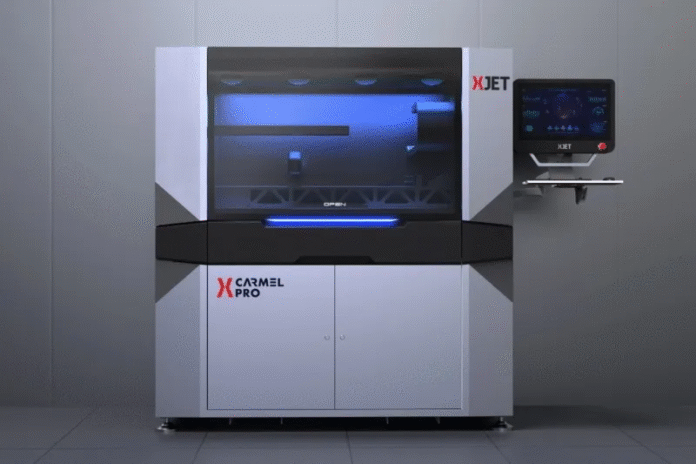XJet, which has developed the Carmel range of 3D printers, has announced a new model, the Carmel Pro, that’s said to be smaller and more affordable. XJet is claiming that it requires a 60 to 70% lower initial investment than its existing Carmel systems.
As with other models in the Carmel range, it uses inkjet printheads together with XJet’s NanoParticle Jetting, which jets the material itself to create objects. This is a fairly unique approach as most other inkjet-based 3D printers jet the binder that glues the material together, which is normally supplied as a powder. The Carmel Pro can handle both metal and ceramic materials, which come as a fluid in order to be jettable and which XJet refers to as inks (which they really aren’t, since there are no colorants).
XJet says that it’s compatible with the full range of its materials. These include Zirconia ZR02 for ceramic parts such as ball bearings, dental applications and valve and pump parts. There is also Alumina, or aluminium oxide A1203, which is used for electrical insulators as well as machining and cutting tools. The metals include stainless steel SS316L, which is used in a wide variety of applications such as surgical tools, luxury goods and water treatment. XJet also produces a soluble support that can be rinsed away once the part has been printed.
The Carmel Pro boasts four material channels as well as a number of automation features. This includes single-button job starts with automated pre-checks, guided setup wizards, and self-monitoring systems. There is a 20 minute makeready time between jobs, for cleaning and set-up.
The objects are produced on a removable build tray, which measures 350 x 140 mm. It has a build speed of 1.4mm height per hour, with an accuracy of +/- 50 microns on areas up to 5cmm in height, and of 1% up to 100 microns, with a minimum feature size of 200 microns. The machine as a whole measures 1.75 x 1.9 x 0.85 m, which is considerably smaller than the original Carmel 1400 C/M models.
Guy Zimmerman, CEO of XJet, commented, “By delivering the same precision and material capabilities of our larger systems in a compact, cost-efficient format, we’re enabling a new generation of manufacturers, designers, and researchers to leverage the unique advantages of NanoParticle Jetting technology.”
The Carmel Pro will be commercially available in Q2 2026. It will be shown at this month’s Formnext show and you can find further details from xjet3d.com.

















